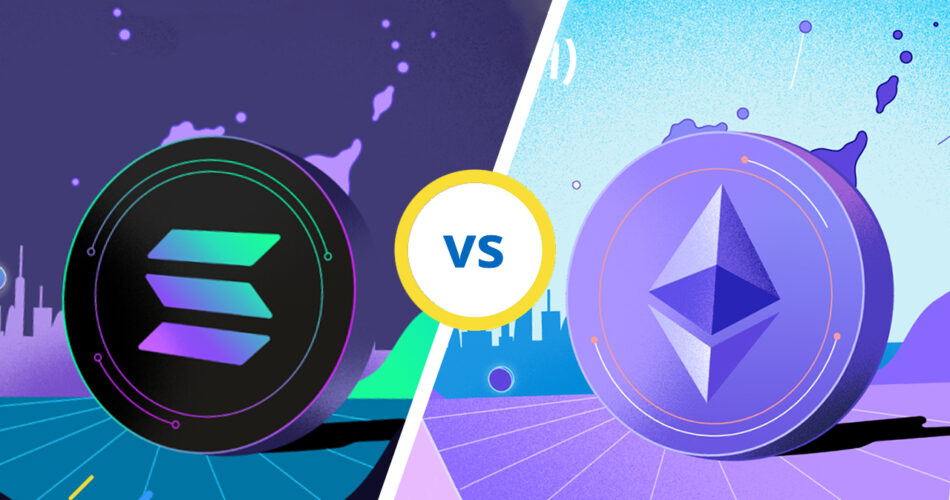Having established our authority in the crypto comparison niche with in-depth reviews like Kaspa vs Solana and Litecoin vs Ethereum, we’re back to dissect the Solana vs Ethereum debate. As the crypto world evolves, understanding the nuances of these platforms becomes crucial. Let’s dive in.
Table of Contents
What is Solana?
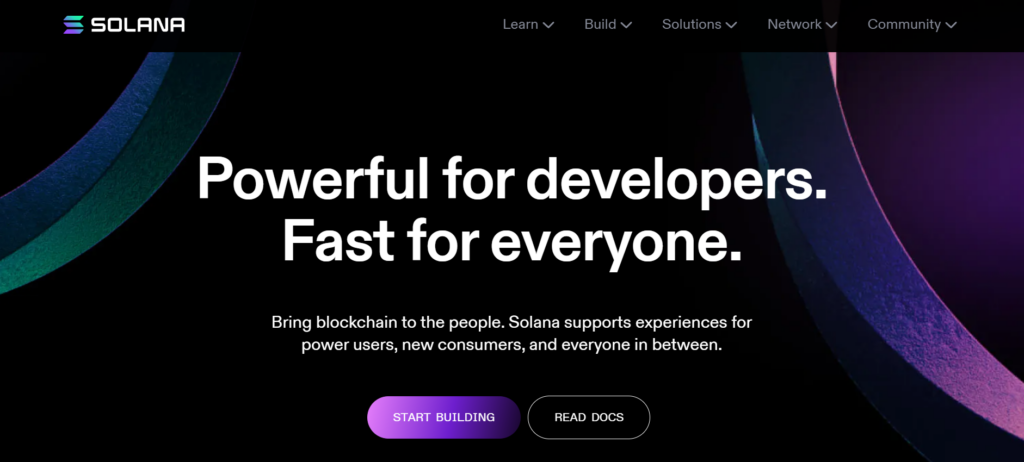
The Genesis of Solana
Solana, often referred to as the “blockchain at scale,” was conceived in 2017 with a vision to address the scalability issues that plagued many existing blockchains. Founded by Anatoly Yakovenko, Solana’s unique approach to consensus and block production allows it to achieve unparalleled speeds without compromising security. The platform’s genesis was rooted in the belief that a decentralized system could match the performance of a single-node system, thus bridging the gap between decentralization and high throughput.
Innovations and Features
At the heart of Solana’s performance lies its innovative consensus mechanism, Proof of History (PoH). Unlike traditional blockchains that rely on synchronized clocks to order transactions, PoH allows Solana to create a historical record that proves that an event has occurred at a specific moment in time. This drastically reduces the time needed to reach consensus.
Furthermore, Solana’s Sealevel platform enables parallel smart contract runtime, allowing multiple smart contracts to run simultaneously, maximizing efficiency. Coupled with its Tower BFT, an optimized version of the traditional Byzantine Fault Tolerance, Solana ensures security while maintaining its blazing fast transaction speeds.
The platform also boasts a growing ecosystem of projects, from DeFi to Web3 applications, making it a formidable competitor in the blockchain space. With features like Gulf Stream, which allows transaction caching and forwarding, and Turbine, a block propagation protocol, Solana stands out as a next-generation blockchain platform.
Metrics
What is Ethereum?
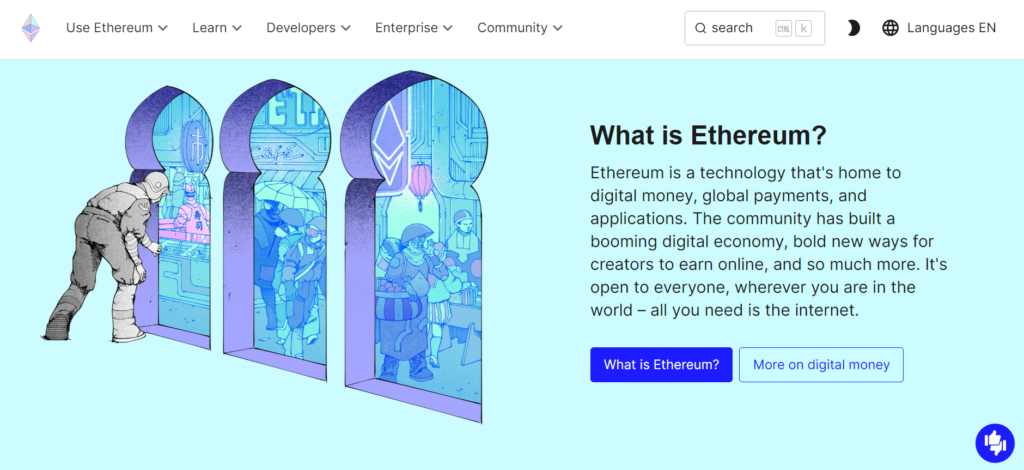
Ethereum’s Groundbreaking Inception
Ethereum, conceptualized in late 2013 and brought to life in 2015 by Vitalik Buterin and a team of visionary developers, was designed as a platform to go beyond the financial use cases allowed by Bitcoin. It introduced the revolutionary idea of “smart contracts” to the world. These self-executing contracts, with the terms of the agreement directly written into code, opened the door to a plethora of decentralized applications (DApps). Ethereum’s launch wasn’t just the birth of a new cryptocurrency (Ether or ETH); it was the dawn of a new era of blockchain technology and decentralized platforms.
Capabilities and Evolution
Ethereum’s primary distinction lies in its ability to execute Turing-complete smart contracts, making it possible for developers to create a wide range of applications, from games to decentralized financial tools, on its platform. The Ethereum Virtual Machine (EVM) serves as the runtime environment for these smart contracts, ensuring they execute as programmed without any possibility of downtime, censorship, fraud, or third-party interference.
Over the years, Ethereum has undergone multiple upgrades, each aimed at improving scalability, security, and overall user experience. Notable upgrades include the Constantinople and Istanbul hard forks. The platform moved from a Proof-of-Work (PoW) consensus mechanism to Proof-of-Stake (PoS) with its Ethereum 2.0 upgrade, aiming to address scalability and environmental concerns.
Ethereum’s vibrant community of developers, combined with its robust infrastructure, has made it the go-to platform for ICOs (Initial Coin Offerings) and the burgeoning DeFi (Decentralized Finance) sector, solidifying its position as a cornerstone of the modern crypto ecosystem.
Metrics
Solana vs Ethereum – Key Differences
| Feature | Solana | Ethereum |
|---|---|---|
| Website | https://solana.com/ | https://ethereum.org/ |
| Native Token | SOL | ETH |
| Established | 2017 | 2013 |
| Historical Background | Born out of the need for higher scalability in blockchain platforms. | Pioneered the concept of a general-purpose blockchain with smart contract functionality. |
| Fair Launch, Premine | No, had a seed presale | No, had a seed presale |
| Consensus Mechanism | POH (Proof of History) | POS (Proof-of-Stake), moved from POW (Proof-of-Work) |
| Block Time | 400 ms (2.5 blocks per second) | ~13 seconds |
| TPS (Transactions Per Second) | 4000 now in mainnet. Up to 65000 | 15-30 per second. Up to 100000 after upgrades |
| Transaction cost | 0.000050089 SOL ($0.0012) | 31 Gwei ($1.13) |
| Smart Contracts | Yes, with Solana’s Sealevel platform | Yes |
| NFT | Yes | Yes |
| Programming Language | Supports C/C++, Rust, etc. (BPF) | Solidity, Viper, Yul/Yul+ |
| Supply Limit | 500 million | No limit |
| Block Rewards | Decreases over time, based on inflation rate. | Various |
| Strengths | High scalability, low transaction costs, and fast block times. | Robust developer community, wide adoption, and pioneer in smart contract functionality. |
| Weaknesses | Still gaining trust and adoption in the broader crypto community. | Higher transaction fees, scalability issues (though being addressed with ETH 2.0). |
Use Cases and Applications
Solana’s Expanding Horizon
Decentralized Finance (DeFi)
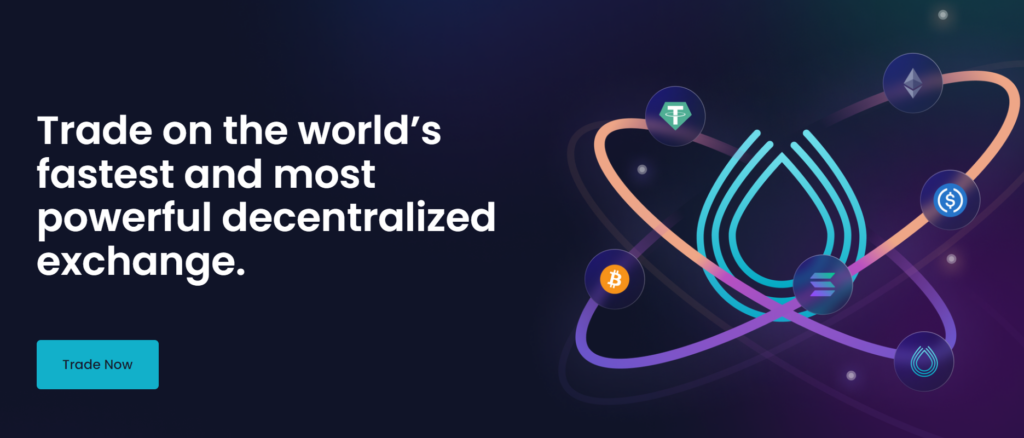
Solana’s high throughput and low transaction costs have made it a preferred choice for emerging DeFi platforms. Projects like Serum and Raydium showcase Solana’s potential in creating decentralized exchanges, lending platforms, and yield farming opportunities.
Gaming and Virtual Worlds
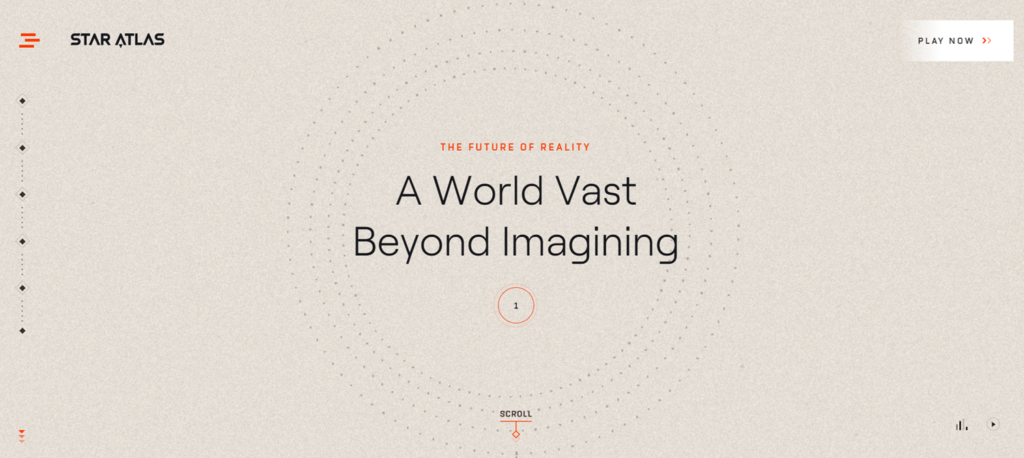
The blockchain’s ability to handle a large number of transactions per second makes it ideal for decentralized gaming. Games like Star Atlas are pioneering the way for a new era of blockchain-based MMORPGs on Solana.
Web3 Applications
Solana’s robust infrastructure supports the development of decentralized web applications, ensuring user privacy and data ownership.
NFT Marketplaces
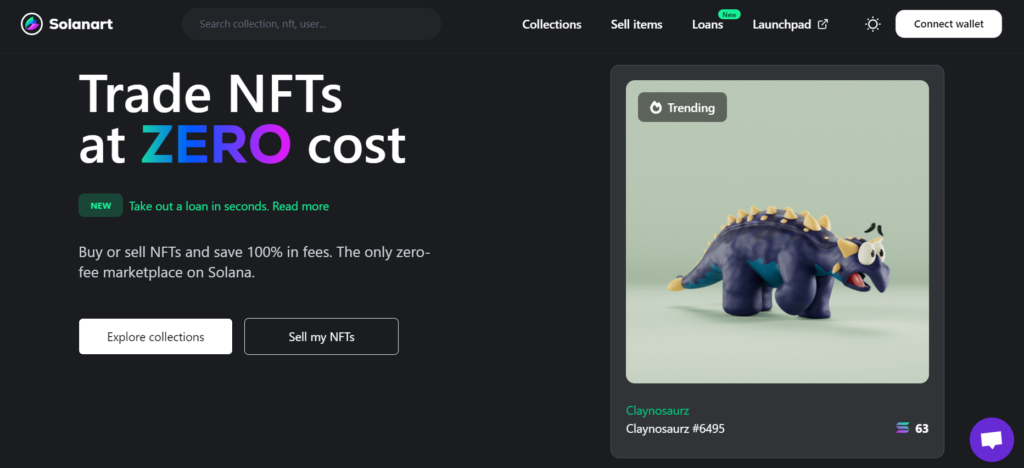
With platforms like Solanart and Metaplex, Solana is quickly becoming a hub for artists and creators to mint and trade Non-Fungible Tokens (NFTs).
Ethereum’s Diverse Ecosystem
Smart Contracts
Ethereum’s primary claim to fame, these programmable contracts automate and verify the terms of a contract, eliminating the need for intermediaries. They form the backbone of most applications on Ethereum.
Initial Coin Offerings (ICOs) and Token Sales
As the pioneer platform for token sales, Ethereum has facilitated the fundraising for countless projects, allowing them to issue their tokens in exchange for ETH.
Decentralized Autonomous Organizations (DAOs)
Ethereum has paved the way for the creation of DAOs, organizations that are run through rules encoded as computer programs, ensuring transparency and eliminating the need for centralized control.
Decentralized Finance (DeFi)
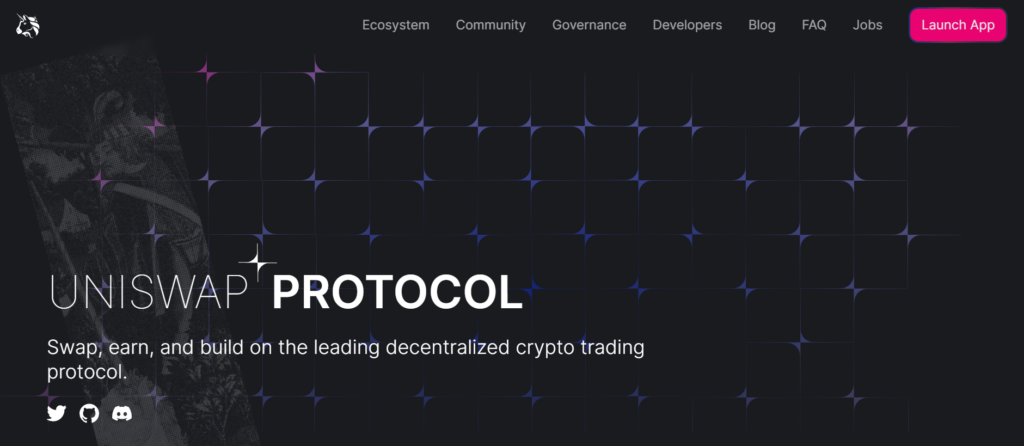
Platforms like Uniswap, and Compound have been built on Ethereum, offering services ranging from decentralized exchanges to lending and borrowing platforms.
NFT Platforms
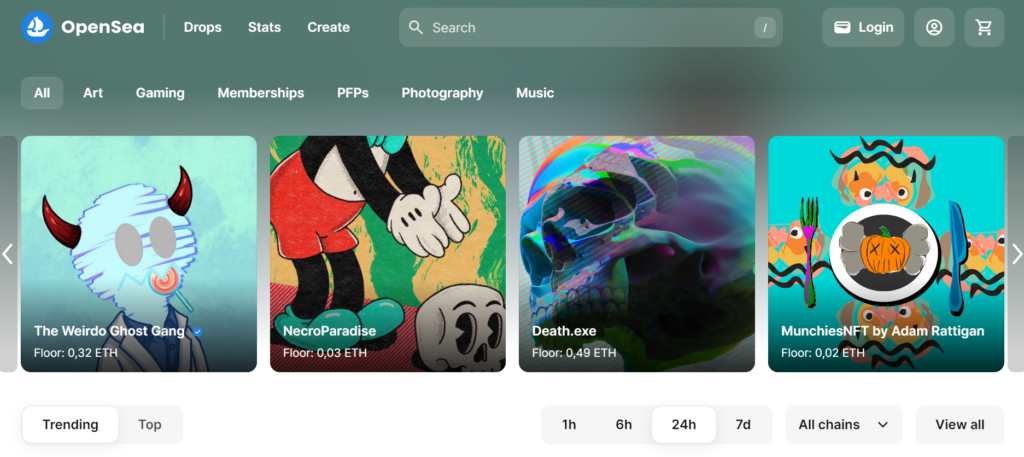
Ethereum is home to some of the largest NFT marketplaces like OpenSea, Rarible, and Foundation, where artists and creators can mint, buy, and sell unique digital assets.
Enterprise Solutions
With Ethereum’s Enterprise Alliance, many businesses are exploring the use of Ethereum for supply chain management, data authentication, and more.
Risks and Considerations
Solana’s Growing Pains
Network Centralization Concerns
While Solana’s high throughput and scalability are commendable, there are concerns about the centralization of validators. A limited number of validators could potentially control a significant portion of the network, leading to centralization risks.
Security Incidents
As with any emerging technology, Solana has faced its share of security challenges. Past incidents, like the network going down temporarily, have raised questions about its robustness and resilience.
Adoption and Ecosystem Development
Being relatively newer than Ethereum, Solana’s ecosystem is still in its nascent stages. While it’s growing rapidly, it has yet to achieve the widespread adoption and diverse range of dApps that Ethereum boasts.
Economic Model
Solana’s tokenomics and economic model are still evolving. Changes in staking rewards, inflation rates, or other economic factors could impact the value and utility of the SOL token.
Ethereum’s Challenges and Evolution
Network Congestion and Gas Fees
One of the most significant challenges Ethereum has faced is network congestion, leading to high gas fees. While Ethereum 2.0 was aimed to address this, the transition phase still sees fluctuating transaction costs.
Smart Contract Vulnerabilities
Ethereum’s smart contracts, while revolutionary, are prone to bugs and vulnerabilities. Past incidents, like the DAO hack, highlight the potential risks associated with flawed smart contract code.
Competitive Landscape
With the rise of other smart contract platforms offering similar capabilities, Ethereum faces stiff competition. Platforms like Binance Smart Chain, Cardano, and Polkadot are vying for a share of the decentralized application market.
Solana vs Ethereum: What to Buy?

Our Investment Decision
Making informed investment decisions is crucial. After thorough research and analysis, we’ve decided to hold more SOL than ETH in our portfolio. Here’s why:
Limited Total Supply
One of the fundamental principles of value is scarcity. Solana’s total supply is capped at 500 million SOL, ensuring that there will never be an oversupply of the token. This limited supply can potentially drive demand and value upwards in the long run.
Attractive Valuation Metrics
As of now, both the price and market cap of Solana are considerably lower than Ethereum, especially when you factor in its potential. This presents an attractive entry point for investors looking for significant upside potential.
Vibrant Development and Community
An active development community is a strong indicator of a project’s long-term viability. Solana’s community is not only active but also innovative, consistently pushing the boundaries of what’s possible in the blockchain space.
The 100x Hype
The crypto community is buzzing with predictions of Solana potentially pumping 100x by 2030. While it’s essential to approach such predictions with caution, the underlying sentiment indicates a strong belief in Solana’s future potential.
Additional Thoughts and Considerations
While our decision leans towards Solana, it’s essential to understand that the crypto market is inherently volatile and unpredictable. Ethereum, being a well-established player with a proven track record, offers stability and has been a cornerstone of the decentralized movement.
Solana, on the other hand, is an emerging star with a lot to prove. Its potential for high rewards comes with its set of risks. The platform’s future depends on its ability to scale, secure its network, and foster a thriving ecosystem of dApps and projects.
Furthermore, the broader macroeconomic environment, regulatory changes, technological advancements, and market sentiment will play significant roles in shaping the trajectories of both Solana and Ethereum.
In conclusion, while we’re bullish on Solana’s prospects, diversification remains a key principle of investment. It’s always wise to spread risks and not put all eggs in one basket. Whether you’re team Solana, team Ethereum, or somewhere in between, always do your research and stay informed.
Conclusion
As we delve deep into the Solana vs Ethereum debate, it becomes evident that both platforms, while having overlapping ambitions, offer unique value propositions and cater to different niches within the decentralized ecosystem.
Solana, with its high-speed transactions and innovative consensus mechanism, is carving a niche for itself as a go-to platform for scalable decentralized applications. Its potential is undeniable, and the growing community support underscores its promise. The buzz around its potential growth, coupled with its current valuation metrics, makes it an intriguing prospect for those looking to diversify their crypto portfolios.
On the other hand, Ethereum, the trailblazer of smart contract functionality, continues to be a dominant force in the crypto world. Its transition to Ethereum 2.0 and the shift to Proof-of-Stake consensus is a testament to its adaptability and commitment to addressing the community’s concerns. Ethereum’s rich ecosystem, teeming with diverse dApps, tokens, and projects, speaks volumes about its foundational importance in the decentralized movement.
However, as with all investments, it’s crucial to approach decisions with a well-rounded perspective. While we’ve shared our insights and rationale behind our investment choices, the world of crypto is marked by its volatility and unpredictability. Factors beyond technology, such as regulatory changes, market dynamics, and global economic factors, play a pivotal role in shaping the future of any cryptocurrency.
In the end, whether you’re gravitating towards Solana’s promising horizon or Ethereum’s established legacy, the key lies in continuous learning, staying updated, and making informed decisions. The journey of crypto is as much about understanding technology as it is about understanding the ethos of decentralization and the promise of a more equitable financial future. As we continue to navigate this exciting journey, always remember to invest with clarity, conviction, and caution.
FAQs
How does Ethereum’s smart contract capability compare to Solana’s?
Ethereum is the pioneer in smart contracts, but Solana, with its high throughput, offers a competitive environment for DApp development.
Are there any other platforms similar to Solana and Ethereum?
Yes, there are several other blockchains like Binance Smart Chain, Cardano, and Polkadot that offer similar functionalities.
